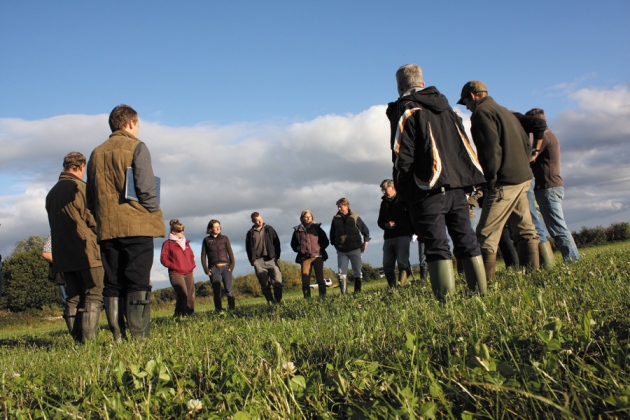This recent publication was preceded by a 2001 compilation, EC-sponsored Research on Safety of Genetically Modified Organisms, of 81 Commission funded projects involving over 400 laboratories covering subjects such as horizontal gene transfer, environmental impact of transgenic plants, plant-microbe interactions, transgenic fish, recombinant vaccines and food safety. The projects in the latest report are grouped into four principal areas: environmental impacts of GMOs; GMOs and food safety; GMOs for biomaterials and biofuels – emerging technologies; and risk assessment and management – policy support and communication.
The authors of the latest report leave no doubt about the conclusions from 25 years of research. On page 16 of the 263 page report they state, “The main conclusion to be drawn from the efforts of more than 130 research projects, covering a period of more than 25 years of research, and involving more than 500 independent research groups, is that biotechnology, and in particular GMOs, are not per se more risky than e.g. conventional plant breeding technologies.” This conclusion is based on the “precautionary principle” that some in the U.S. view as having an extreme risk aversion when considering uncertainties of new technologies.
The projects on environmental impacts of GMOs ranged from problem solving technology efforts on rice blast, resistance to parasitic nematodes and nitrogen utilization in wheat to problem findings efforts on gene flows and impacts of Bt trans-genes on biodiversity of non-target insects and soil microbiota. Coexistence of biotech and non-biotech crops also had research as did biotech crops in developing countries such as potatoes in the Andes Mountains and cotton in China. Sustainable production on farms and in forests was also researched.
Research described in the GMOs and food safety chapter included safety assessments for biotech foods and feed to examine whether the products pose particular risks for humans, animals and the environment from long-term exposure and consumption. A risk assessment approach was developed that has been included in the risk assessment strategy of the European Food Safety Authority and is consistent with international guidelines developed by the FAO/WHO. The possible occurrence of unintended alterations in the composition of GM food crops as a result of genetic modification was also researched as was horizontal gene transfer of recombinant DNA from GM crop-derived foods to humans and its consequences.
Less critical in the debate over biotech crops is chapter 3 on GMOs for Biomaterials and Biofuels – Emerging Technologies which have gained some support because of global warming and limited supplies of fossil fuels. One approach is to use GMOs as a research tool to produce new crops that are the result of natural breeding. Production of new drugs in plant systems is being researched, as are easy to process plant materials with high levels of cellulose and low levels of lignin.
The projects in chapter 4 on Risk Assessment and Management – Policy Support and Communication provide methods to address challenges related to the introduction of GMOs in EU markets. A project on virus-resistant GM plants has made progress on assessment of risks linked to virus resistance traits. A new risk analysis approach has been developed for food that integrates assessment of human health, consumer preferences and values and impact analysis of socio-economical issues. Coexistence and traceability methods have been developed that might be used in the management of biotech and non-biotech supply chains, value added and niche markets, and in detecting and excluding harmful products. Public sector scientists working in biotechnology research have been involved in international negotiations and policy discussions and the role of science in general and of public research in particular have become part of the negotiating agendas.
When the report of the first 15 years of biotech research was released the anti-biotech groups claimed that enough research had not been done on the safety of biotech crops. Ten years later with 50 more research projects and greater efforts at communicating the results to the public, the public debate has not changed significantly. There is still a need for better communication to wider audiences.
The EU Commission remains committed to moving the EU forward based on science. In the introduction to the 2010 report, EU Commissioner for Research Innovation and Science Maire Geoghegan-Quinn states that the report is consistent “with the principles laid down in the ‘Europe 2020’ Strategy” adopted by the European Council in June 2010, with the mission of giving the European Union a smart, sustainable and inclusive economy. The strategy features seven flagship initiatives, one of which is the creation of an ‘Innovation Union’ with a focus on ‘Building the Bio-Economy by 2020’. Maive Rute, Director Biotechnologies, Agriculture and Food, Directorate-General for Research and Innovation at the Commission said in the report’s Foreword that the European bio-economy is worth 2 trillion Euros ($2.6 trillion) annually and accounts for 22 million jobs. The EU has a strong research presence in the field, but researchers and enterprises have to compete on the global level where countries such as the USA, China, India and Brazil are committing substantial new investments to biotechnology.
The results of 25 years of research in the EU should be taken serious by U.S. crop producers, regulators and consumers, just as the EU researchers and innovators take them seriously. There is no reason for the U.S. and the rest of the world to take the same detour away from science taken by EU agriculture. U.S. researchers and regulators should continue to methodically pursue the science of biotechnology and advance efficient agricultural production consistent with the safety standards currently in place.

